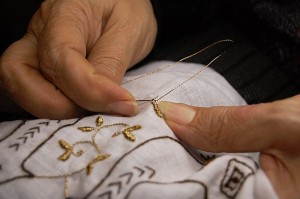Three free snifters…
And try and say that quickly!!!
You know of course that a snifter is a brandy balloon…
…a piece of glassware that is narrower at the top than the bowl and concentrates the heady aroma of the liquor to the nose.
And in essence that’s what this post is.
Three free snifters designed to titillate your palate and give you an idea of what’s emerging from my little grey cells.
***
I’m well on the way with a fantasy – 25000 words of The Cabinet of Curiosities.
Fantasy has always been an important genre to me, ever since I was a little girl. To think that I have four published fantasies (The Chronicles of Eirie) is still a great thrill for me.
But back to this latest WIP.
It begins in a province of my created world (Eirie) called The Han, a far-eastern inspired place. Far-eastern culture and myth are real inspirations for the early chapters of the story.
In addition, the narrative will take my protagonist across Eirie in a deadly race against time and enemies, so it’s likely that creatures from the varied world of mythology will cross her path.
Would you like your first snifter?
Chapter One
Lien sat beneath the elm tree.
In summer, its dancing leaves and fractured shadows charmed her and she knew the spirits hovered there. She could see them, even if no one else could, but she never feared them. Perhaps she should but as she looked up through the filigree shade, it all seemed so benign. She pushed her needle back and forth, making sure the silk filament moved smoothly, no knots, or else Old One, her grandmother, would be displeased.
In the peaceful garden, it was possible to hear the thread whispering through the silk. She and the silk talked to each other – secret chatter. Lien spoke of her dreams and the silk filament answered back with acknowledgement. If it disagreed, for sure it would knot or break. No matter that others might think she was mad – such times made her content. For the moment.
The last stitch of vermilion finished the point of the carp’s tail and she carefully laced the remaining silk back into the reverse side. She was skilled at double-sided embroidery where a mirror image of silken perfection appeared as the fabric was flipped over. Old One expected the skill to be handed down, daughter to daughter. Was it not after all, what gave her family First House of Silk status?
In the tree above, there was an agitated fluttering and she looked up, sucking in her breath as her stiletto-sharp ivory needle pierced her finger with her inattention.
A bead of blood sat atop her skin – imperial red – and then dripped onto the white silk fabric, pooling and spreading. Another bead appeared and before she could suck her finger, there was a flash of white and a soft touch like kitten’s fur, the leaves of the elm shivering with concern. Then the flash was gone. A quick bark beyond the Middle Court and silence.
Lien spat onto the corner of a kerchief, dabbing at the bloodstain, wondering what had rushed by her to set her skin tingling and her stomach writhing.
Maybe something as normal as a bird.
Perhaps…
***
Historical fiction has an equally loved place in my heart since I was introduced to it in Year 7 of high school by the librarian. If my memory serves me, the first historical fiction I read was a Rosemary Sutcliffe.
I’ve now got six historical novels of my own published and to be honest, as I began this next, my heart pattered with excitement. It’s temporarily titled A Small Thread of Silk and was inspired by research I discovered whilst writing Michael the last book of The Triptych Chronicle.
There exists an extremely rare and very exotic silk thread made from the filaments secreted by a sea creature. Called byssus, the thread is soft and cloth woven from it can be threaded through a wedding ring. Its natural golden colour is so iridescent it’s like a pale sunbeam. It can neither be dyed nor painted upon and it is rumoured to be the fabric of the Blessed Veronica.
My story involves nuns, the Benedictines, Lyon and Levantine trade. I’ve been knee deep in religious rule, in the intricacies of trade and in the strange effect that relics have upon penitents and pilgrims. As always, medieval trade has the capacity to enthral me with its scope, both socio-geographically and economically. The commodities traded are jaw-dropping.
You’ll notice in this most miniscule next snifter that there are asterisks through the narrative. That’s because I write on the fly and add the detailed fact from my files later. I like to keep on writing while there is momentum. If I continually stop to refer to the right fact or word, my train of thought stalls or dies.
Chapter One
‘We need a relic.’
‘Pardon,’ the Obedientary put down her mug of watered wine and stared at the Abbess.
‘We need a relic,’ the Abbess replied. Younger than the Obedientary, she had blue eyes, guileless, but with a veil of strength behind the clarity. The Obedientary had observed the blue harden to moulded steel, and as strong, many times. Especially when senior prelates had passed through the town of ******* eager to see the nunnery closed down because of its small population and lack of income. As the abbess spoke now, her eyes darkened – a tint reminiscent of the forge as the smithy honed sword blades for the noblemen who sought to sail to the Holy Land.
‘Something to bring the pilgrims,’ she continued, tapping her fingers slowly on the table as if the rhythm of her hands settled the rhythm of her thoughts. ‘In short, to bring us monies. For it is obvious the cathedral men will not fund our needs beyond the most basic requirements. Payment for what we turn off from the scriptorium, or for our church embroideries will not sustain this place beyond the bare essentials.’
‘Ma Mère,’ the Obedientary replied to her abbess, ‘we have no money with which to purchase a relic, even if we could find one. We are a poor house.’
‘And likely to remain so until our establishment crumbles around us. But I have a plan, Soeur Cécile.’
They sat alone in the Abbess’s dour chamber, a wooden platter of bread, cheese and watered wine between them. The Abbess, Gisela of ******** had broken the community rule of eating together in the refectory in this instance, and for some reason, she had also broken the rule of silence that accompanied eating.
The Obedientary frowned and broke off a piece of the bread that was still warm from the kitchen fire. It was coarse bread but the flour was of quality, donated by a noble (who?) who bought himself indulgences to pay for his loose pizzle. He so often strayed that the sisters no longer blushed as they kneaded the bread. In the beginning, it had seemed that they worked with something lewd, something forbidden, but now they were used to it and after all, they all benefitted from his misdemeanours.
The bread smelled of the hearth and had a whisper of the taste of honey. It was not often that they had good white flour, normally just rye or barley flour but this was true wheat bread – the nobleman must have sinned greatly for this to have come their way, thought Soeur Cécile as she chewed.
***
And finally the collaboration planned between myself and highly successful historical fiction author, Simon Turney. Simon, a hybrid author published by Orion, Canelo and Simon’s own imprint, came up with a tremendous idea so far removed from our normal individual timeframes that it took my breath away.
But to work with someone of his calibre was such a wonderful opportunity and Simon writes explosive historical fiction.
He suggested we write a book set in the 1830’s. A brother and sister are convicted and transported from Yorkshire to the terrifying unknown of the other side of the world. A place called Van Diemens’ Land. Simon is writing the Yorkshire end and when he’s finished, I take over with the VDL (Tasmanian) end.
It’s a long-term project for us both (a couple of years) but I can assure you that what Simon has already written is a window into the poverty and cruelty of Victorian England. Civilized in some ways but outrageously cruel in others. It’s working title is Transportation but watch this space for a much better attention-grabbing title.
So here is the final snifter, a tiny extract of an as yet unedited first draft in which you meet Tom, whose joint life story with his sister, Phoebe, this will become…
Chapter One
The ragged sheet blew along Bondgate, whipped to a frenzy by the eddying spring wind, slapping against the step of an affluent-looking house before flapping across the gravelled road and skittering along the gutter. Tom watched with interest, bleary eyed and tired. The sun was yet below the roofs behind him, gloom filling that side of the street so that he narrowed his eyes into the shade and watched the flapping page flutter and bounce along the wall of Saint John’s church.
He found that he had unconsciously picked up his pace despite his weariness and natural reticence at the early morning walk to work. Hurrying in the wake of the paper, he neared the ancient stone bridge that crossed the gurgling river and carried the road into town. Just before that he would turn left and make his way towards the factory past the brewery and along the riverbank, but he would savour these last few moments of peace.
Against the odds the sheet slapped against the crumbling stone parapet end of the bridge and stayed there, edges fluttering, pinned by the breeze. Frowning, Tom hurried over and grasped the corner before the gusts whipped it away again and carried it down into the river.
A newspaper…
Tom stared at the paper in his hands. It had seen better days, and consisted solely of the front page, torn from the rest, either by accident or design. The inky block letters filled the sheet in various sizes, informing some fine gent who’d owned this of all manner of tidings in the wider world. He marvelled at what it must be like not only to be able to make head or tail of such a thing, but to be able to stretch pocket change far enough to afford such a luxury in the first place.
He would probably be late for work if he spent too much time puzzling over the tiny print, and that would never do, since he’d get a clipped ear at the least, and a beating more like, if he did. And he had to keep the overseer sweet, since lads his age wanting work were ten a penny, and without labouring at Master Williamson’s Varnish Works Aunt Pol would never be able to afford to keep a roof over their heads, or so she claimed.
Simon has been traipsing here and there all over Ripon and has had his nose inside Poor Houses, Varnishing Works and Victorian cemeteries as well as examining any printed registers and detail from the 1830’s. For myself, I’ve visited colonial collections within Hobart, traipsed the dockside paths that our protagonists will have walked as convicts, visited Bothwell, where Tom may well be sent, run my fingers across the walls of Port Arthur Penitentiary and sat reading some of the copious documentation of the colonial Governors and civil servants of the time.
***
History is never dull, always informative and for those of us with active imaginations, it’s like fuel for a warming fire, so this next twelve months will be full of adventures, jumping from a fantasy world to twelfth century Lyon and Constantinople and then to nineteenth century Tasmania.
Perhaps I shall rename 2020 as My Imaginarium…
***
PS: Further to this post, you may like to read a previous post of mine on fact and fiction
https://pruebatten.com/2013/02/14/spinning-facts-to-make-fiction/








Exciting times ahead Prue <3
Exciting and if my self-discipline can actually prove itself, highly creative and rewarding. But you see, there’s this thing called the great outdoors… 😉